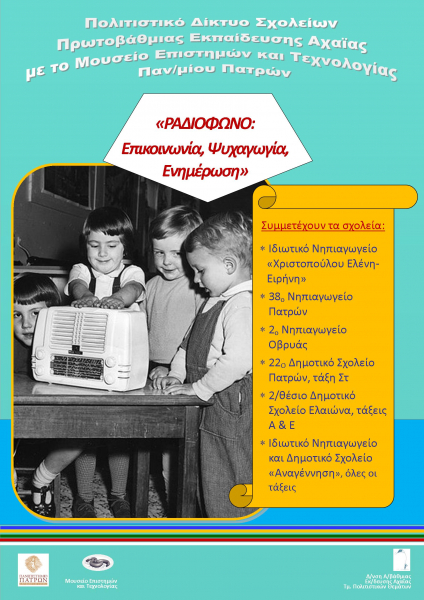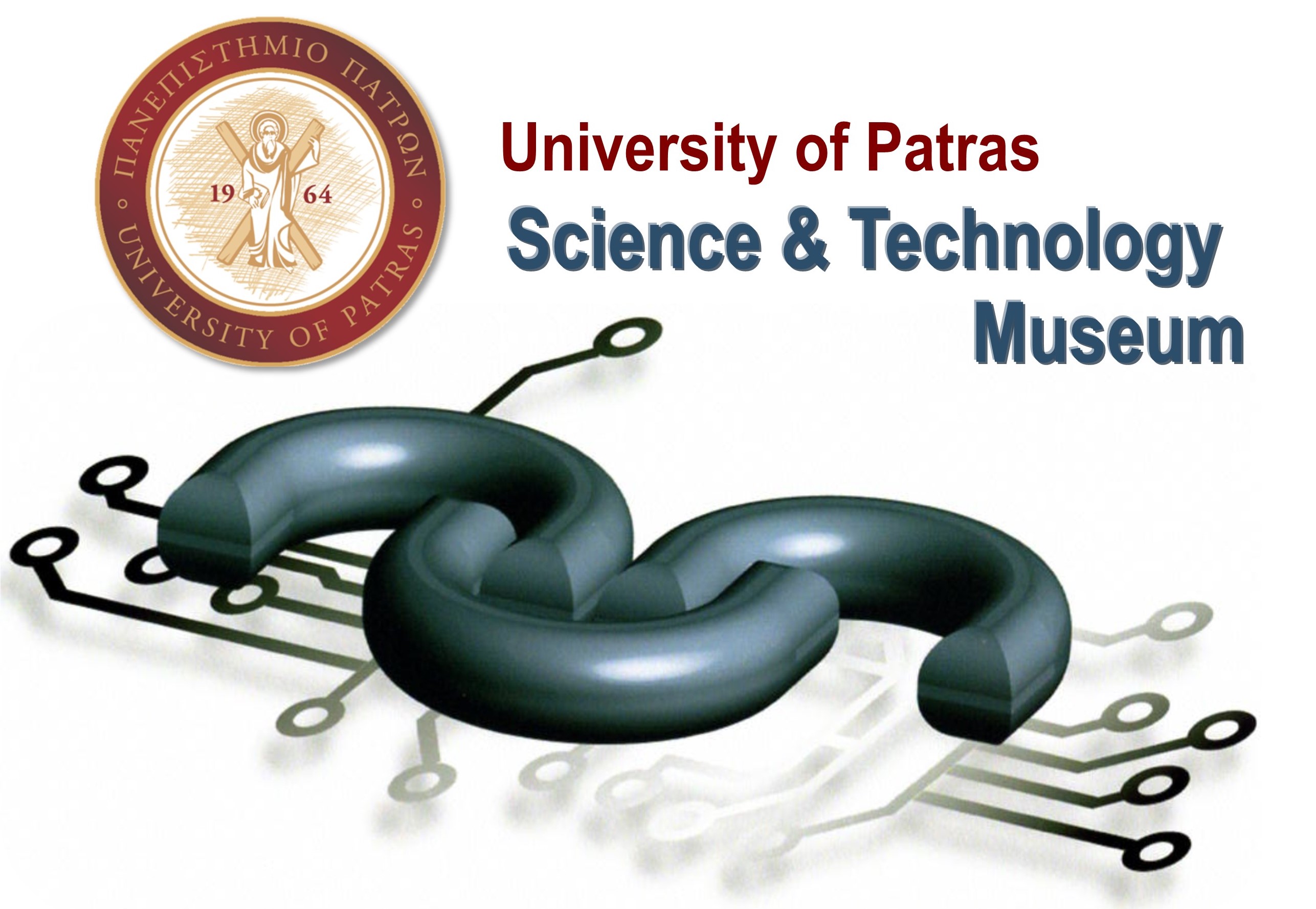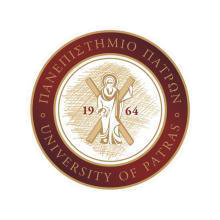- Home
- Activities
- Thematic Networks
- Cultural Network “Radio: Communication, entertainment, information!”
Thematic Networks
- Home
- Activities
- Thematic Networks
- Cultural Network “Radio: Communication, entertainment, information!”
Cultural Network “Radio: Communication, entertainment, information!”

Science & Technology Museum, University of Patras Campus, Greece
The Thematic Cultural Network “Radio: Communication, entertainment, information” is organized by the Department of Cultural Education of Achaia and the Science and Technology Museum. The overall goal of the Network is for students to understand what radio is and the role it has played over time in communicating, entertaining and informing people globally.
SPECIFIC OBJECTIVES
1. COGNITION
- Explore what radio is and how it works.
- To get to know the electronic data on which its operation is based and its role.
- To get to know different types of radios technologically
- Get to know different types of shows
- To get in touch with its evolution over time
- To study the social needs that each season served
- Understand its role in communication and its difference from other media.
- Explore its role in entertainment and information and how this role is shaped in relation to its evolution.
2. SKILLS
- To make their own radio with simple materials
- Produce a radio show
- Recognize the radio technology of every era
- To be able to distinguish quality radio from non-quality radio
3. EMOTIONS
- To activate the imagination, to create and act by starting from sounds, dialogues, music, etc. coming from the radio.
- To get acquainted with the radio and to prefer it, especially in relation to the television
Network Activities
1. Experiential Seminar
“Objects are just the beginning,” for teachers
2. Suggested preparation activities in the classroom, before the educational visit:
- Students can create mind maps with the radio as the central concept or participate in a brainstorming action
- The replies, which will probably contain concepts such as communication, information, music, etc., are indexed by the students and mixed working groups are created with convergent or divergent representations at the discretion of the responsible teacher
- Search for definitions in digital and printed dictionaries for the words that students will focus on (either from maps or from brainstorming
- Games using the words communication, telecommunications, radio, radio, radio, entertainment, information e.g. analysis in their compositions, crossword puzzles, etc.
- Children's interviews with their parents and grandparents about whether they listened to the radio, where, how, when, what their favorite shows were and what their content was
- Documenting the percentage of students in the class who listen to the radio and the type of radio stations they listen to
- Discussion and writing down the children's views of what they think they will see in the Science and Technology Museum.
4. Suggested compositional activities in the classroom, after the educational visit
- To comment on the educational activity in which they participated in the Museum and encourage them to express their impressions in a variety of ways e.g. to create a collage of impressions of paintings or write a letter to the Museum to thank and point out what was liked and what was not liked
- To make a theatrical game representing the way the radio works, the journey of the radio waves, the reaction of some who hear shocking news from a radio good or bad, etc.
- To search for tracks from old radio shows and record parts of modern radio shows. Get to know the internet radio. Comparison and conclusions
- To search for historical moments in the course of radio e.g. the beginning of the Greco-Italian war, the announcement of the defeat in World War II, Seferis' address to the BBC, the radio of the Polytechnic University in Greece "Here Polytechnic" etc.
- Each student to write about “how he imagines they will be listening to the radio after 30 years”
- To write a text for a radio show.
- To write a text for radio advertising.
- To create scenarios for theatre, puppetry, shadow theatre, etc. on the subject e.g. personalize the radio and tell its story or grumbles on television, etc.
- To participate in the school internet radio and produce radio broadcasts
- To create an exhibition corner for the radio in the classroom. The photographic material of yesterday and today, old devices, photographs from the visit to the STM, etc.
- To present the exhibition corner by students to students of other classes of the school.
- To Investigate the possibility of any of the material gathered for the creation of the exhibition/corner to be donated to the Science and Technology Museum. (strengthening the relationship between student, school and museum)
5. Concluding the network action
All participants will present their work in any content and way they wish (e.g. event, fairy tale, photo exhibition, frozen images, exhibition and commentary on a collection, etc.) at an event at the Science and Technology Museum in the context of the Celebration of the International Museum Day (May 18, 2014), which will end with the experiential action-treasure hunt related to the subject.
List of Dates (Page event details)
- From 29 November 2013 to 31 May 2014
Powered by iCagenda
One Object Every Month
Announcements
Calendar
| Mon | Tue | Wed | Thu | Fri | Sat | Sun |
|---|---|---|---|---|---|---|
STM's Events
STM's Newsletter
Popular Articles
- Museum Water Kits
- Permanent exhibition "Telecommunications in our lives"
- The Science and Technology Museum at the Development Forum Network 2023 “University of Patras, Science and Technology Museum: Interacting with Society”
- Awarding schools in the Local Photography Competition “Capturing the water systems of my country”.
- The Second Digital Exhibition of Virtual Reality (VR) of the Science and Technology Museum is a fact!!!














